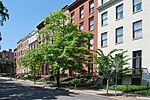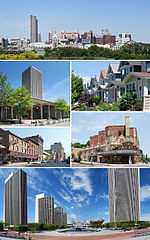New York State Education Department

The New York State Education Department (NYSED) is the department of the New York state government responsible for the supervision for all public schools in New York and all standardized testing, as well as the production and administration of state tests and Regents Examinations. In addition, the State Education Department oversees higher education, cultural institutions such as museums and libraries, vocational rehabilitation, and the licensing of numerous professions. It is headed by the Board of Regents of the University of the State of New York (USNY) and administered by the Commissioner of Education. Its regulations are compiled in title 8 of the New York Codes, Rules and Regulations. The main offices of the department are housed in the New York State Department of Education Building, located at 89 Washington Avenue in Albany, the state capital.Each year New York spends over $22,000 per student, which is 90% more than the average in the US.
Excerpt from the Wikipedia article New York State Education Department (License: CC BY-SA 3.0, Authors, Images).New York State Education Department
North Hawk Street, City of Albany
Geographical coordinates (GPS) Address Nearby Places Show on map
Geographical coordinates (GPS)
| Latitude | Longitude |
|---|---|
| N 42.653822 ° | E -73.756336 ° |
Address
North Hawk Street 10
12210 City of Albany
New York, United States
Open on Google Maps










